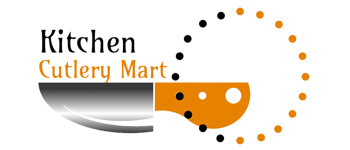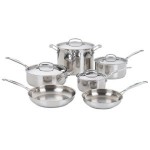 Stainless Steel Cookware
Stainless Steel Cookware
Stainless steel is certainly the most popular material for cookware. Therefore the choices in the stainless steel section are quite numerous. The reason for its popularity lays in the fact that stainless steel is a strong and durable material that is easy to clean. On the other hand, it‘s not a very good heat conductor and it’s not nonstick. Be sure to buy cookware that has the label 18/10, because it denotes the best quality of stainless steel.
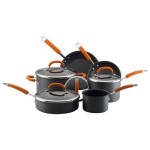 Hard-Anodized Cookware
Hard-Anodized Cookware
Hard anodizing is a process in which aluminum cookware undergoes in order to produce a thicker coating of aluminum oxide resulting in a stronger, harder and more durable material that is resistant to corrosion and abrasion. The process of hard anodizing produces extremely durable cookware that is twice the hardness of stainless steel.
The cookware’s surface doesn’t chip or peel and it can handle extremely high-temperature levels without damage to the finish. This cookware has a very long lifespan.
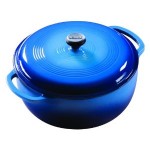 Cast Iron and Enameled Cast Iron Cookware
Cast Iron and Enameled Cast Iron Cookware
Cast iron cookware has excellent heat retention and diffusion properties. Seasoning is needed to protect the cast iron from rust and to create a non-stick surface. Cast iron has the ability to maintain very high cooking temperatures so it is commonly used for searing and frying. On the other hand, because of its property to retain heat is an excellent option for cooking stews and braised dishes.
If you are anemic cast iron cookware might be good for you because it leaches small amounts of iron into the food.
Enameled cast iron is the cast iron that has a porcelain enamel glaze. The enamel coating has several benefits: rust is prevented, there is no need for seasoning and the cleaning can be more thorough. Enameled cast iron comes in beautiful vibrant colors. Still, it has some downsides too. Because of the coating, it’s more expensive than bare cast iron and it isn’t good for searing. Furthermore, it has no non-stick properties. Enameled cast iron is a popular material for Dutch ovens.
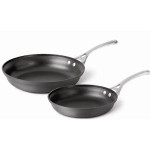 Nonstick Cookware
Nonstick Cookware
Nonstick cookware is great for cooking your meal easily and quickly, which is why is so popular among those who don’t have much time to cook. Nonstick cookware heats up really quick. The other thing that makes it so popular is that food doesn’t stick so it’s ideal for those who don’t like cleaning chores. You don’t need to buy all your cookware as non-stick, just a few pieces. It is common that skillets, fry pans, and roasting pans are nonstick.
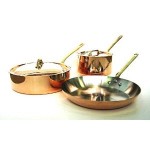 Copper Cookware
Copper Cookware
Copper cookware is very popular among culinary experts and chefs. For example, copper cookware is often used in France for its traditional dishes. Copper is an excellent heat conductor meaning that copper cookware heats quickly and adjusts well to temperature changes.
Copper cookware is often mostly lined or coated with other metals like tin, steel or silver (copper is used on the outside and the other materials on the cooking surface). In this way, copper is prevented from reacting with the food you are cooking. In every case, the stainless steel/copper combinations are considered among the best and safest choices for your cooking. I would recommend not to use badly scratched or uncoated copper cookware because in this way you will avoid copper from coming into contact with food (it can be toxic).
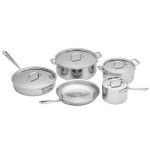 Clad Cookware
Clad Cookware
Clad or bonded cookware is made of layers of different metals. In this way, the cookware’s performance benefits from the different qualities of each metal. Stainless steel is usually the outer layer because it’s a strong and durable material that is easy to clean. Furthermore is a “neutral material” that doesn’t react with food.
The inner layers are often made of aluminum or copper because these materials are excellent heat conductors.
Today you’ll find that most cookware has extra layers on the bottom of the pan, in contact with the heat source. But very few cookware lines have these additional layers on the sides of the pan as well. This type of cookware is known as Full Clad and it’s very expensive to make. That’s why Full Clad costs a little bit more.
